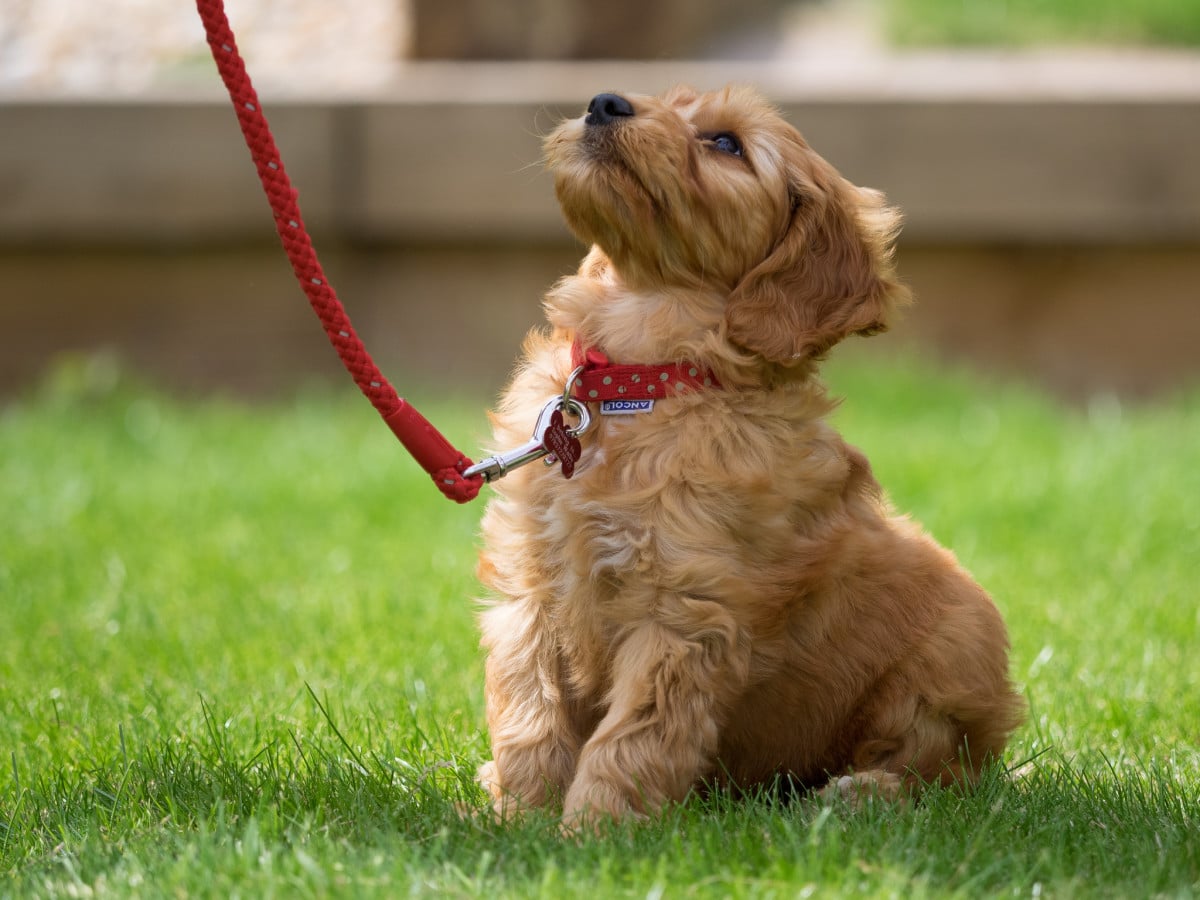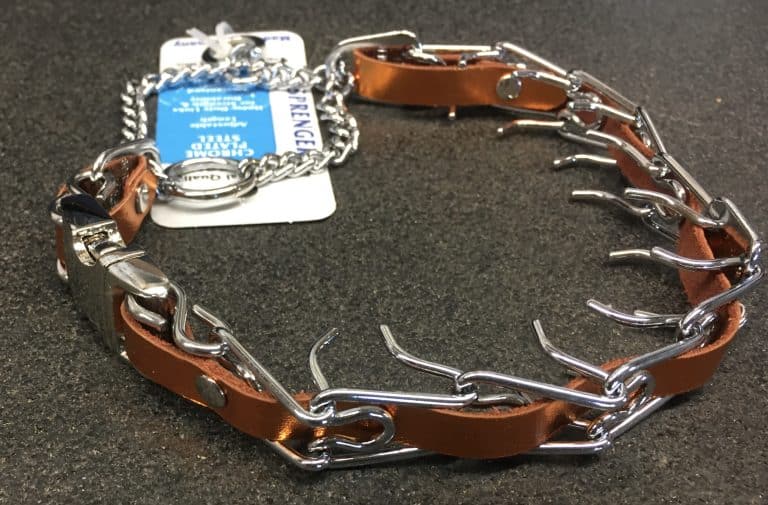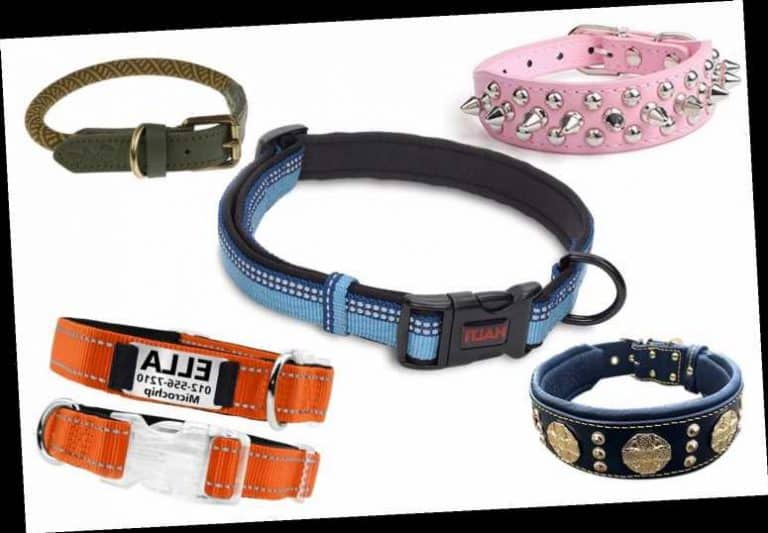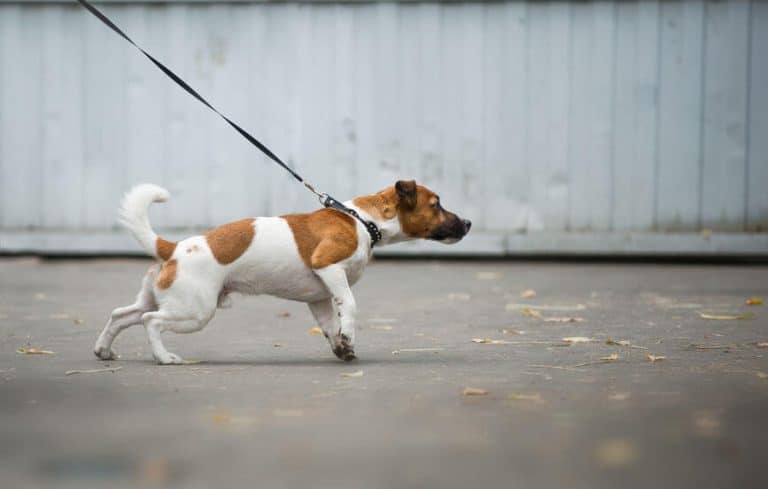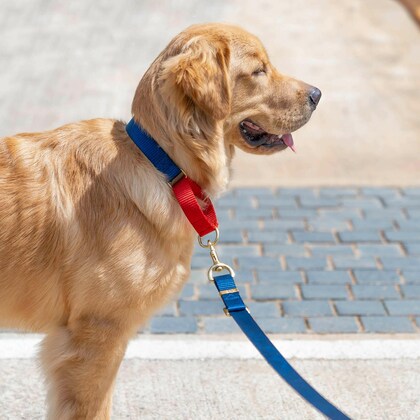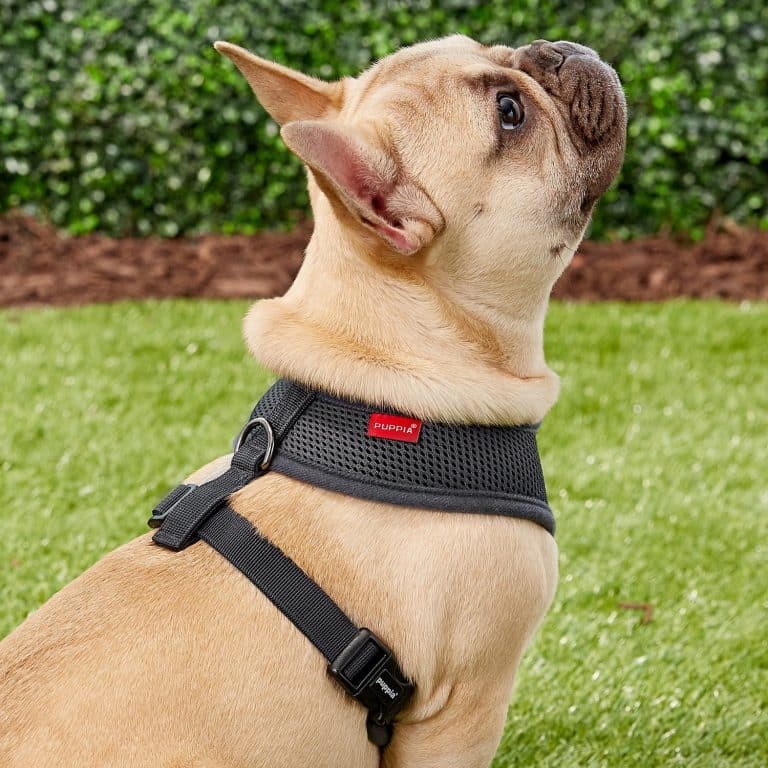Beginner’s Guide: 13 Top Leashes for Dogs that Pull
Walking your dog should be a delightful experience, creating a bond between you and your furry companion while enjoying the outdoors. However, for many dog owners, this vision can be disrupted by stubborn dogs that pull on leashes!
They are tugging and straining at the leash, making the walk feel more like a tug of war than a pleasant outing. If this scenario sounds all too familiar, then you are not alone! The issue of leash-pulling is one that countless dog owners deal with daily. While it might seem minor, it can lead to discomfort, injury, and even a strained relationship between you and your four-legged friend. This is why we are here to help you out!
We have also provided a selection of 13 best leashes designed to tackle this issue head-on, along with the options you might want to avoid.
What to Look for in a Leash for Dogs that Pull?
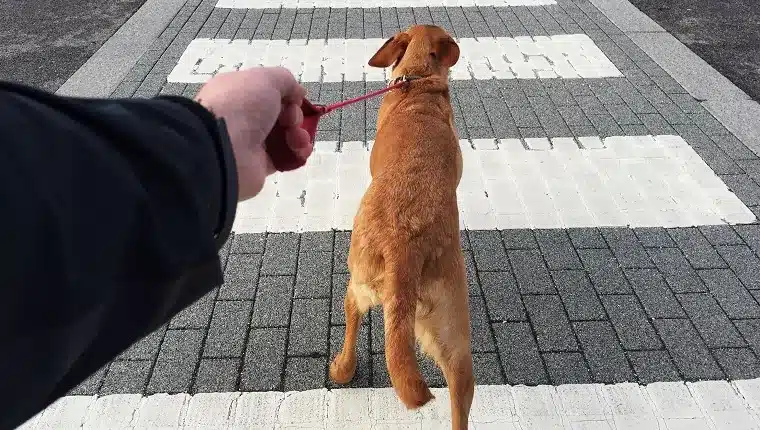
When it comes to choosing the right leash for a dog that tends to pull, there are several crucial factors to consider. The leash you select can significantly impact your walking experience and your dog’s comfort and safety. Here’s what you should look for:
1. Durability and Strength
First and foremost, prioritize durability and strength. Dogs that pull exert substantial force on their leashes, and a flimsy or weak leash may not withstand the strain. Look for leashes from high-quality materials like nylon, polyester, or reinforced leather.
These materials are known for their sturdiness and longevity. Additionally, consider the hardware, such as a leash clip or buckle. Opt for robust, rust-resistant metal hardware that can withstand your dog’s pulling without compromising safety.
2. Length and Material
The length of the leash is another crucial factor. We recommend longer leashes for dogs that pull, as it allows them some freedom while still maintaining control. A leash of around 6 to 8 feet is a good choice.
However, for more control during training or in crowded areas, a shorter leash may be preferred. Choose a material that feels comfortable in your hand and doesn’t cause friction or rope burn. Many dog owners prefer padded handles or leashes made from neoprene for added comfort.
3. Handle Comfort and Grip
An ergonomic and comfortable handle is essential, especially if your dog tends to pull. Look for leashes with padded handles or ones designed to reduce hand strain. A comfortable grip can make your walks more enjoyable and prevent discomfort or blisters during longer outings.
4. Reflective Features for Safety
Safety should always be a top priority. If you walk your dog in low-light conditions or near roadways, opt for a leash with reflective features. Reflective stitching or strips can significantly enhance visibility, making you and your dog more noticeable to drivers and pedestrians and reducing the risk of accidents.
What Makes a Leash Good for Pulling Dogs?
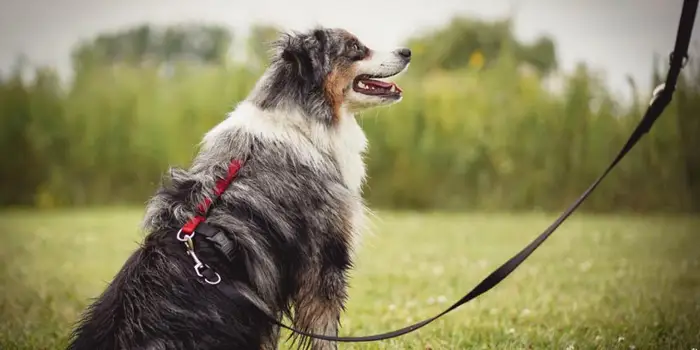
When dealing with dogs that have a strong tendency to pull on their leash, it’s essential to choose a leash that offers specific features designed to address this behavior effectively. Here’s what makes a leash good for pulling dogs:
1. Anti-Pull Features
One of the most effective ways to combat pulling behavior is by using a leash that is compatible with a no-pull harness. No-pull harnesses are designed to discourage dogs from pulling by redirecting their forward movement. To maximize the benefits of a no-pull harness, look for leashes with front-clip or dual-clip attachments.
These attachment points allow you to connect the leash to the harness in a way that discourages pulling. Front-clip harnesses direct the leash connection to the dog’s chest, naturally encouraging them to turn toward you when they pull, disrupting their forward momentum. Dual-clip harnesses provide both front and back attachment points, giving you flexibility in training and control.
When used with these harnesses, the right leash can make a significant difference in curbing pulling behavior.
2. Adjustable Length Options
Versatility is key when it comes to managing a pulling dog. Therefore, leashes for dogs that pull must have adjustable length options. Many leashes come with multiple D-rings or clips that allow you to change the length of the leash quickly.
This feature is useful for adapting to different walking environments and training phases. For example, when you are in a crowded place or during a training session, you can shorten the leash to keep your dog close for better control. When you are in an open space where your dog can have more freedom, you can lengthen the leash to give them room to explore.
3. Training Aids
Training aids built into the leash can be incredibly helpful when dealing with a dog that pulls. Bungee leashes, for instance, have a built-in elastic section that absorbs and dampens the force of your dog’s sudden movements or tugs. This not only reduces the strain on both you and your dog but also provides a smoother walking experience.
Moreover, some leashes have additional handles or loops along their length, allowing you to shorten the leash quickly when needed. These extra handles provide additional control during training or when you need to respond swiftly to your dog’s behavior.
Therefore, leashes for dogs that pull should come with anti-pull features like compatibility with no-pull harnesses, adjustable length options, and training aids. By choosing a leash with these qualities, you can effectively manage your dog’s pulling behavior while ensuring a safer and more enjoyable walking experience for both of you.
Best Leashes for Dogs that Pull
When it comes to choosing the right leash for a dog that pulls, it can be a daunting task, given the multitude of options available. Therefore, to help you make an informed decision, we have compiled a list of the 13 best leashes for dogs that pull. We have also highlighted two leashes you might want to avoid due to their limitations or potential drawbacks.
1. SparklyPets Hands Free Dog Leash
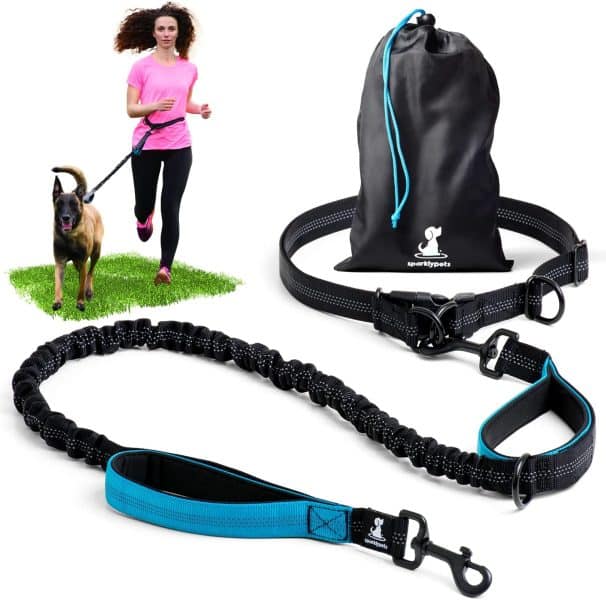
Pros
- Reflective Stitches
- Professional Harness
- Security clips with two stainless steel clasps
- Rubber Handle
Cons
- Only suitable for medium and large dogs
2. Roam Gear Heavy Duty Dog Leash
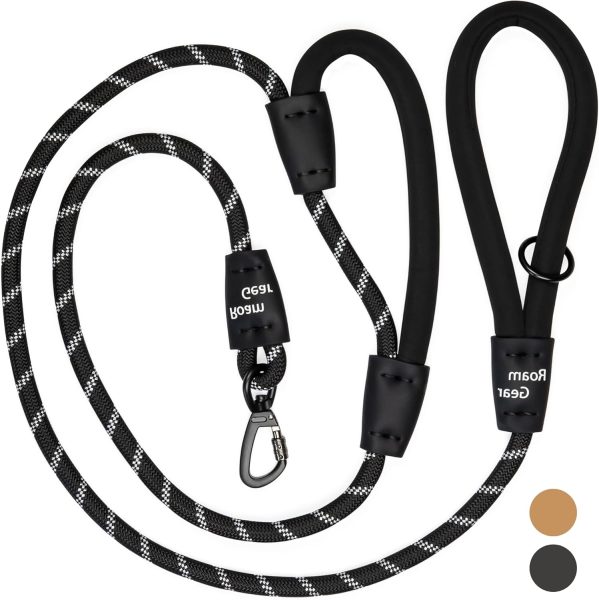
Pros
- Extra Padded Double Handles
- Carabiner Clip
- Night reflective rope
- Silicone clamps
Cons
- Only suitable for medium and large dogs
- Only single color option is available
3. NTR 15FT Training Leash
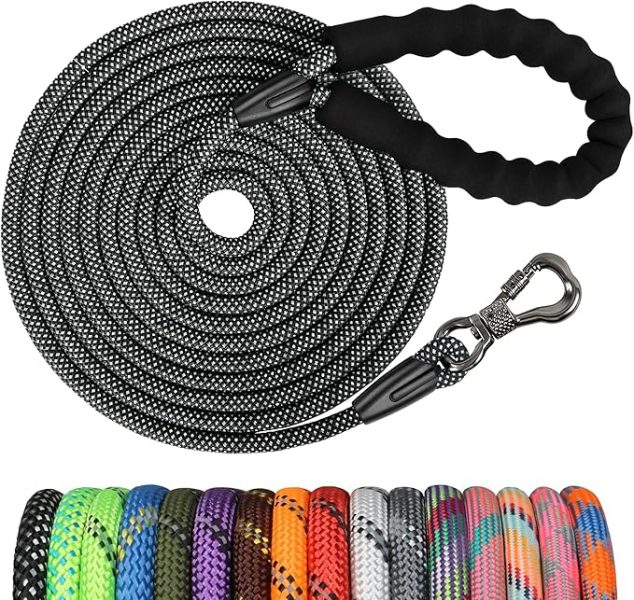
- Swivel lockable hook
- Padded handle
- Made with durable and water-resistant polyester
- Soft padded handles
Cons
- Not suitable for every strong-pulling dog
- Limited sturdiness
4. BAAPET Dog Leash
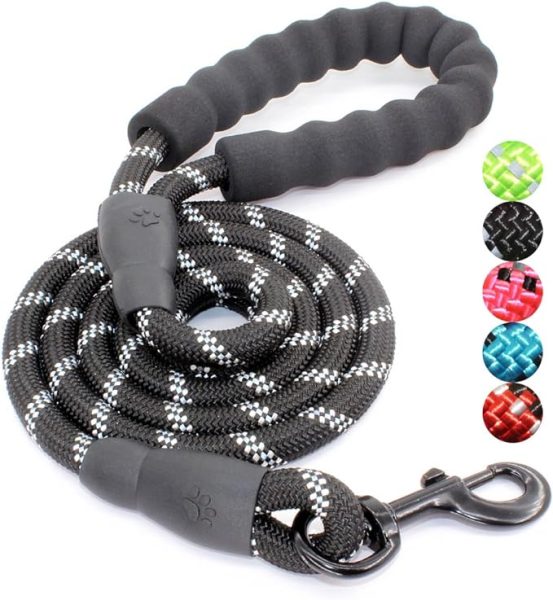
Pros
- Suitable for small, medium, and large dogs
- Comfortable padded handles
- Reflective threads
- Durable clip hook
Cons
- Small length
- No security clamps
5. PetSafe No-Pull Dog Headcollar
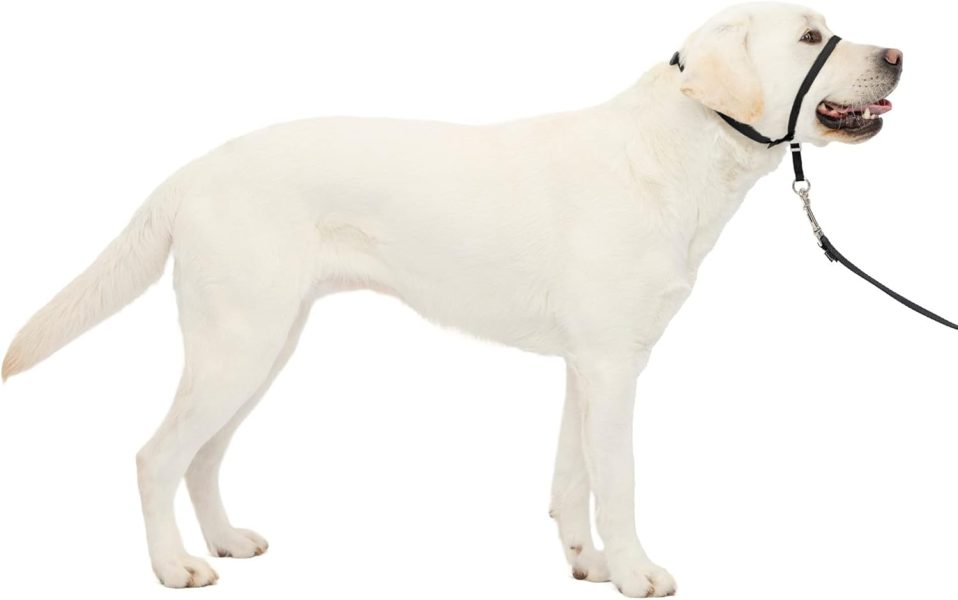
Pros
- Designed by a veterinary behaviorist
- Minimal straps for comfort
- Adjustable nose loop
- Interrupts the dog’s instinct to pull
Cons
- Only suitable for large dogs
- Not recommended for dogs with short snouts
6. Joytale Tactical Dog Leash
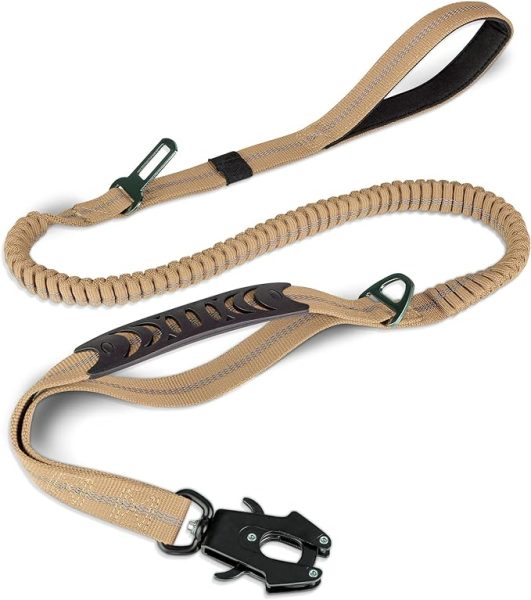
Pros
- Bungee dog leash
- Two padded handles
- Metal carabiner clip
- Double-sided reflective design
Cons
- Not suitable for small dogs
- Small length
7. Taglory Rope Dog Leash
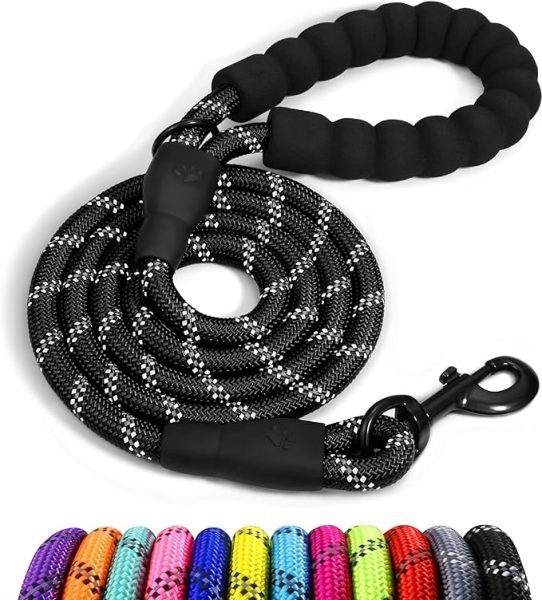
Pros
- Padded handles
- Highly reflective threads
- 360° swivel clasp
- Available in three diameters to fit all-sized dogs
Cons
- Small length
- It may not feel comfortable for the dog
8. PetSafe Easy Walk No-Pull Harness
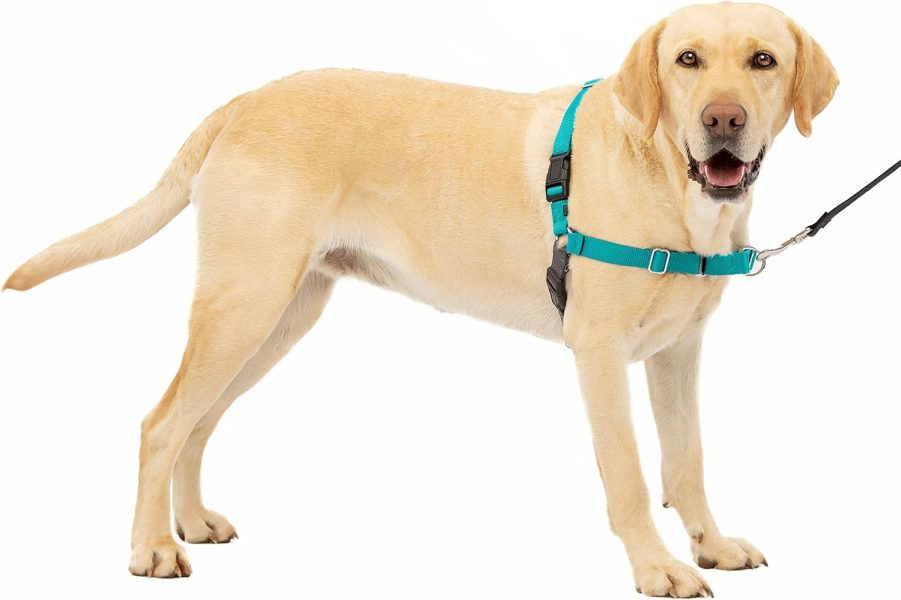
Pros
- Puts gradual pressure on the dog’s shoulder to safely and effectively stop pulling
- Created by a veterinary behaviorist
- Rest on the dog’s chest to avoid choking or gagging
- Easy to fit
Cons
- The owner must walk before the dog, creating room for danger from the back.
- No reflective threads
9. Tuff Pupper Heavy Duty Hands-Free Dog Leash
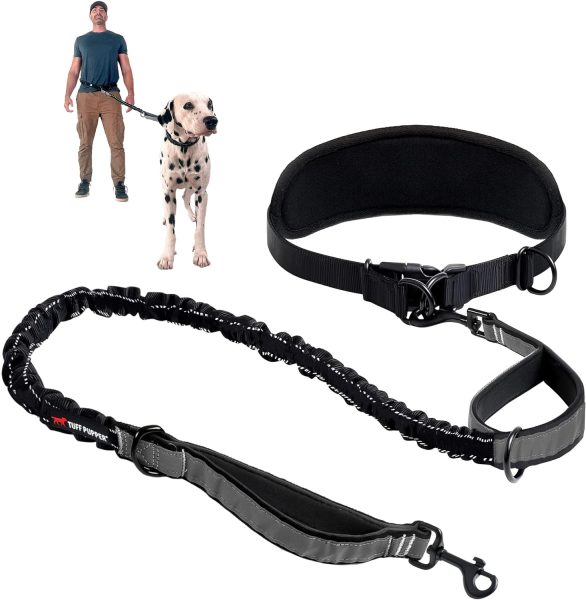
Pros
- Thick padded waist belt
- Dual attachments
- Dual Handles
- 3M Reflective stitching for night safety
Cons
- Not ideal for wet conditions
- Not ideal for very small dogs
10. Petmegoo Strong Dog Leash
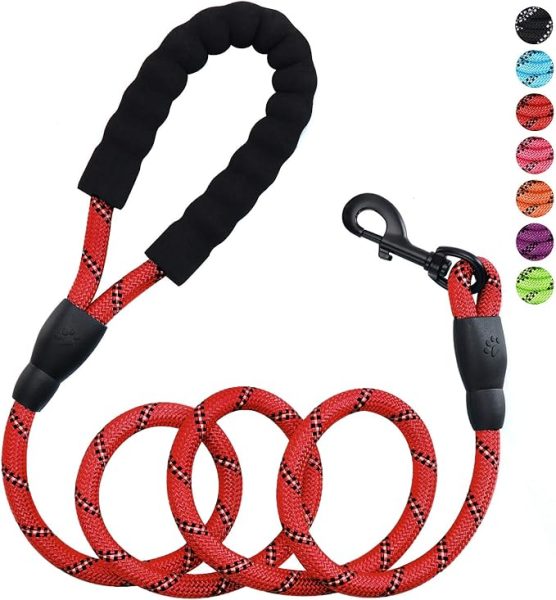
Pros
- Anti-slip handle
- Highly reflective
- Comfortable foam handle
- Metal clasp
Cons
- Elasticity might diminish over time
- Clasps could be sturdier
11. Friends Forever Dog Rope Leash
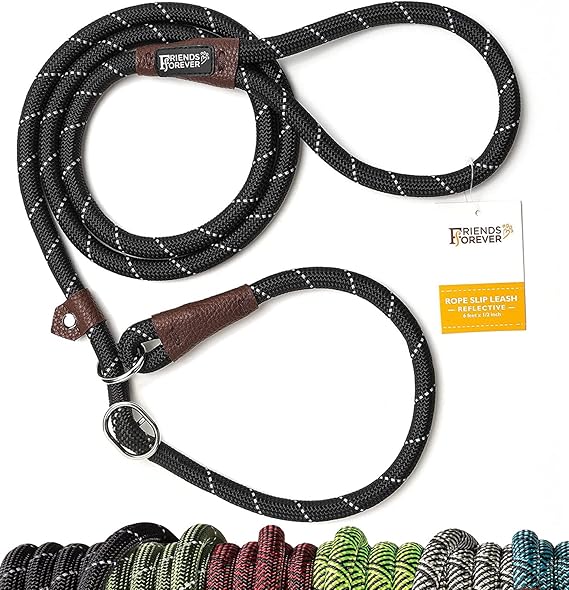
Pros
- Universally fitting size
- Made with lightweight rope
- Chew proof
- No collar or harness is needed
Cons
- It would require maintenance to prevent wear and tear
- It might be too short for large and bulky dogs
12. ThunderLeash No-Pull Dog Leash
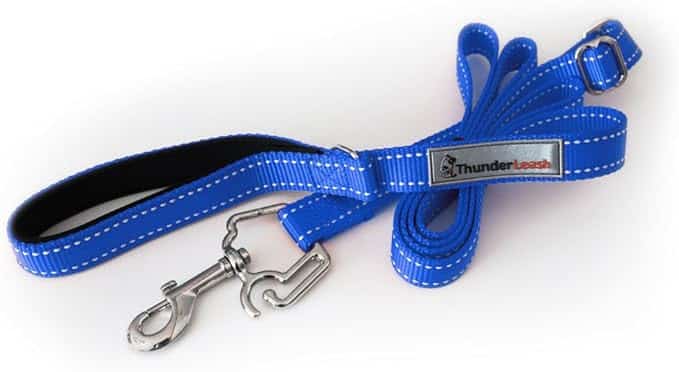
Pros
- Recommended by trainers
- Easy and quick to use
- Comfortable and padded handles
- It can be used as both a harness and leash
Cons
- Only limited color options are available
- No reflective stitching
13. Leashrr Dog Leash with No-Pull
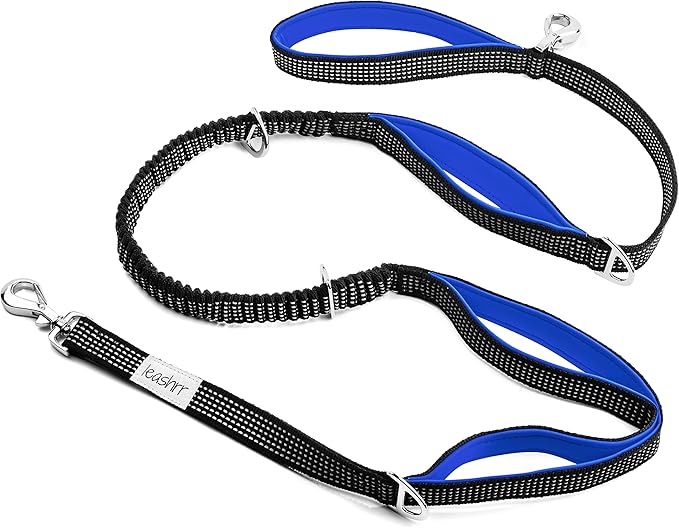
Pros
- Bungee leash for extra support
- Ultra reflective
- Sturdy collar clip
- Four padded comfort handles
Cons
- Not suitable for small dogs
- Only limited color options are available
In summary, the right leashes for dogs that pull depend on your specific needs, the size of your dog, and the level of pulling behavior. Consider the pros and cons of each leash carefully to find the one that suits your dog’s temperament and walking style. Additionally, avoid leashes with significant limitations or potential safety concerns, as they may not effectively address the issue of leash-pulling.
Leashes to Avoid for Dogs that Pull
Now, let us understand what kind of leashes you must avoid if your dog has a habit of pulling. These leashes might be well performing in other areas for other dogs, but they will be inefficient in solving your problem.
1. Belt Leashes
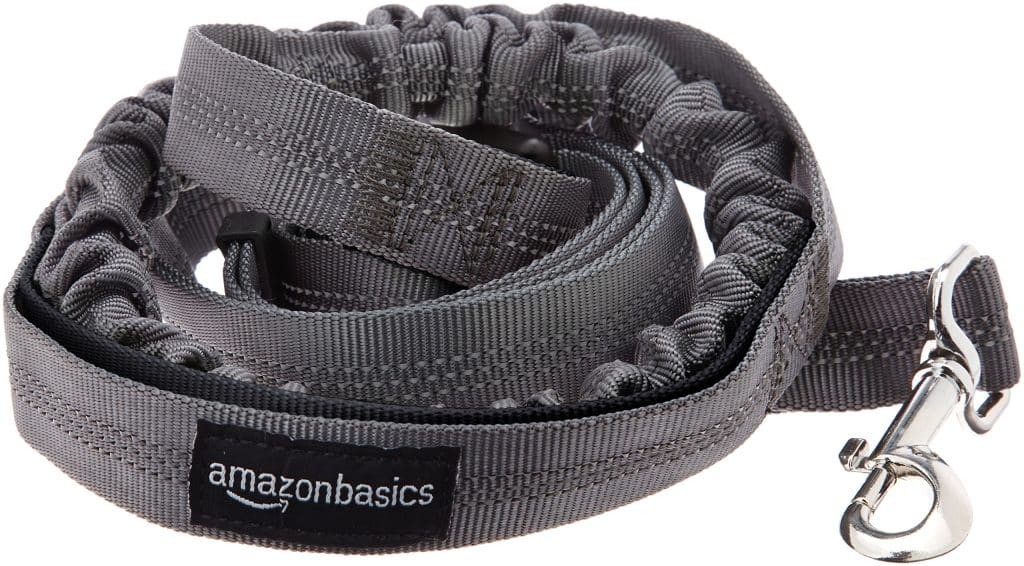
Belt leashes are typically long and thin and offer minimal control over a pulling dog. They also lack the sturdy construction necessary to withstand the force of a strong pulling dog. These leashes don’t provide the versatility needed for training a dog that pulls. Belt leashes are also uncomfortable for the handlers and can easily become tangled.
2. Retractable Leashes
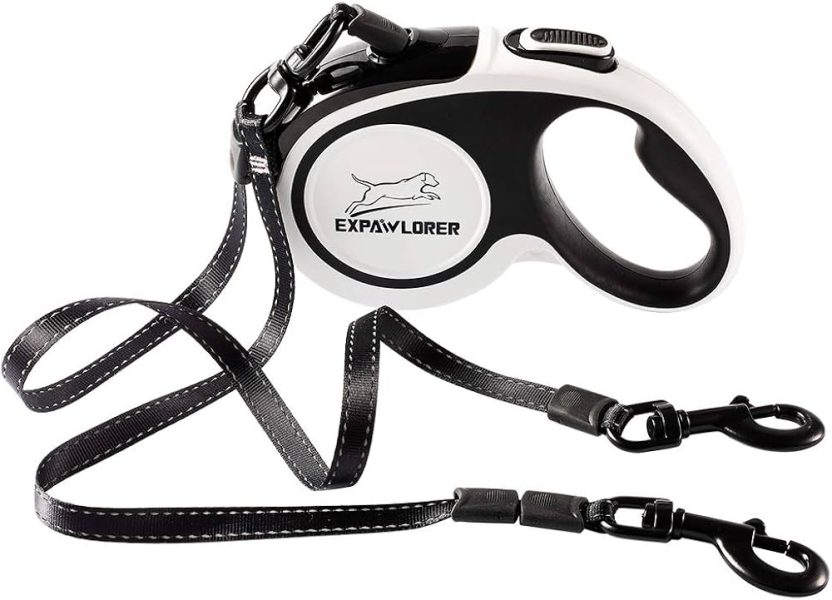
Retractable leashes allow dogs to roam far ahead, which is problematic when dealing with a pulling dog. You will have limited control over your dog’s movements, making it difficult to redirect or keep them from pulling. They also pose a safety risk for your dog as they use a thin cord that can recoil or break suddenly. Additionally, in emergencies, like encountering aggressive dogs or traffic, gaining control of a pulling dog on a retractable leash can be a difficult task.
Additional Tips for Stopping Leash-Pulling
While choosing the perfect leashes for dogs that pull is a crucial step in managing a pulling dog, addressing the behavior requires more than just equipment. Here are additional tips to make your dog stop leash-puling:
1. Positive Reinforcement Training
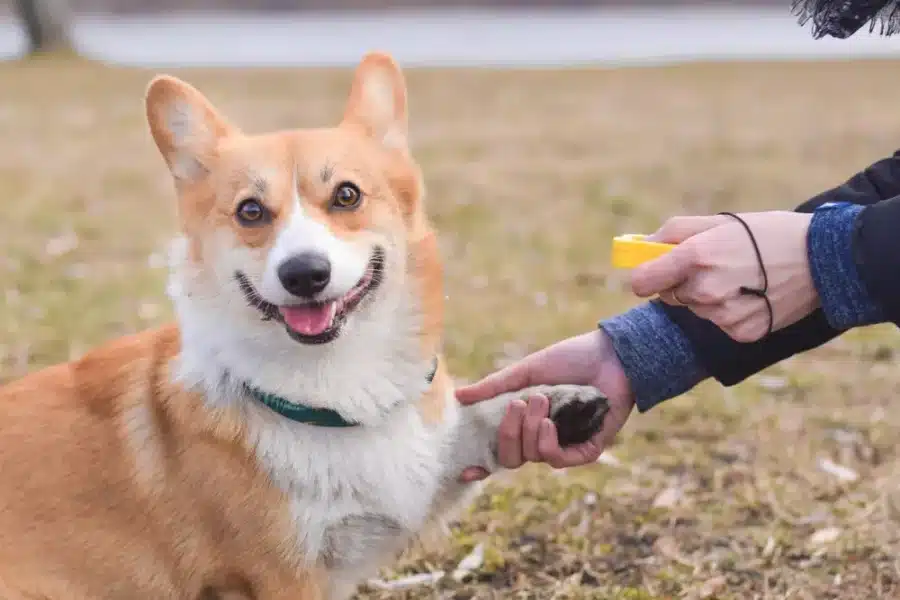
Positive reinforcement is one of the most effective methods for teaching your dog to walk politely on a leash. Instead of punishing your dog for pulling, reward them for walking beside you or with a loose leash. Use treats, praise, and affection to reinforce good behavior.
When your dog understands that walking calmly results in positive outcomes, they are more likely to repeat that behavior. Reward your dog immediately when they walk without pulling. This reinforces a connection between their behavior and the reward.
For challenging cases, use extra-special treats that your dog loves to make the reward more enticing. Leash training takes time, and consistency is crucial, so be patient with your rewards and corrections.
2. Exercise and Mental Stimulation

A tired dog is less likely to pull on the leash. Before walking, engage your dog in physical and mental exercises to drain excess energy. Play fetch, engage in interactive puzzle toys, or practice obedience training at home.
A tired dog will be more focused and less likely to pull during walks. Stick to a regular walking schedule so your dog knows when to expect walks. This can help reduce excitement and pulling.
Vary your walking routes to keep your dog mentally stimulated. New environments can be engaging and distracting positively.
3. Consistency in Commands
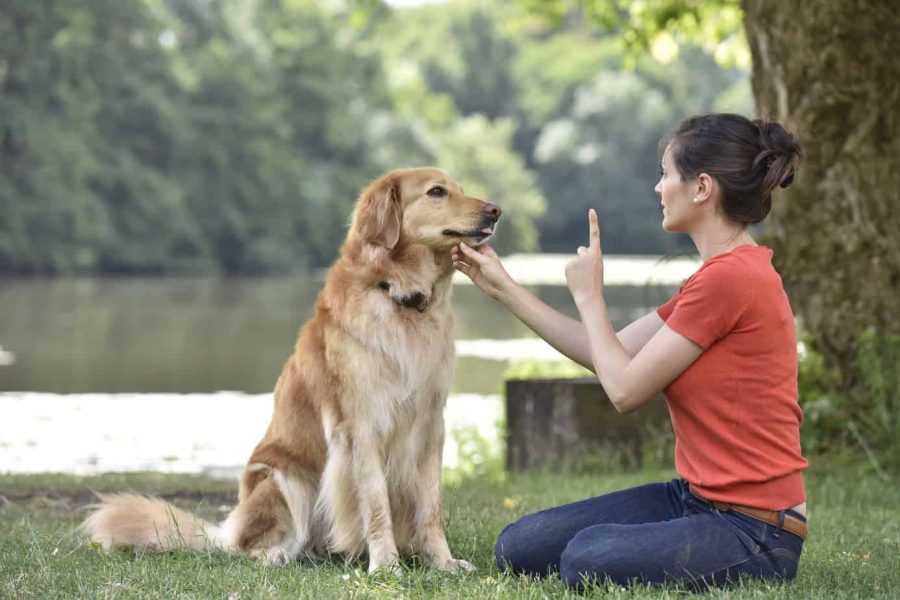
Consistency in your commands and expectations is crucial for training a pulling dog. Use a consistent command such as “heel” or “walk nicely,” and use it every time you want your dog to walk politely beside you. Award using different commands or allowing pulling occasionally, as this can confuse your dog.
Don’t wait for a perfect walk. Reward small improvements, like moments of walking without pulling, to encourage progress. Start training in quiet, low-distraction environments, and gradually work up to busier areas as your dog becomes more responsive to your commands.
4. Professional Training Assistance
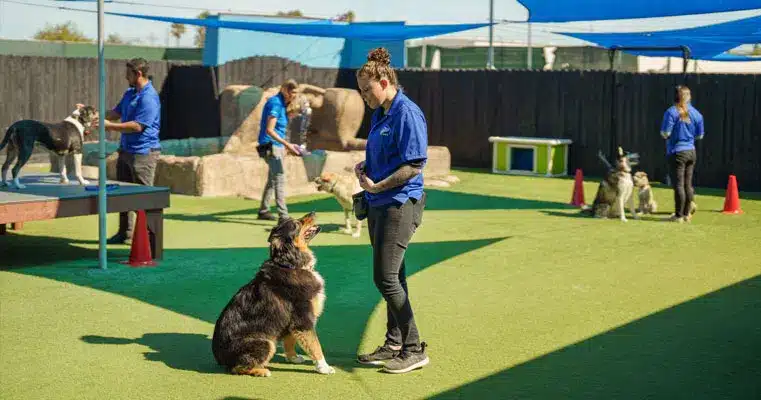
If your dog’s pulling behavior is severe or persistent despite your efforts, consider seeking professional training assistance. A qualified dog trainer or behaviorist can provide personalized guidance and develop a training plan tailored to your dog’s needs. They can help address underlying issues and create a structured training program to improve leash manners.
Consider one-on-one training sessions with a professional to focus on your dog’s specific behavior issues. Enroll in obedience classes or group training sessions where your dog can learn to behave around other dogs and distractions.
It must be noted that stopping leash-pulling involves using the right leash, positive reinforcement training, providing exercise and mental stimulation, maintaining consistency in your commands, and seeking professional assistance when needed. With patience and dedication, you can transform your dog’s pulling behavior into a calm and enjoyable walking experience for both of you.
Conclusion
Walking your dog should be a pleasurable and bonding experience, and conquering the issue of leash-pulling is a significant step towards achieving this goal. Throughout this article, we discovered essential aspects of selecting the right leash and identified features that make a leash ideal for dogs that pull. Choosing the right path is a vital component of your journey to a well-behaved walking companion.
Look for durability, adjustability, comfort, and compatibility with no-pull harnesses. Consider the specific needs of your dog, such as size and strength, when making your selection. Our list of 13 best leashes, along with two to avoid, offers valuable insights into the market’s options to help you make an informed decision.
By getting the right leashes for dogs that pull, giving positive reinforcement training, regular exercise, and having consistency in your approach, you can transform your pulling dog into a well-behaved walking companion and make each outing a pleasant experience for both.

